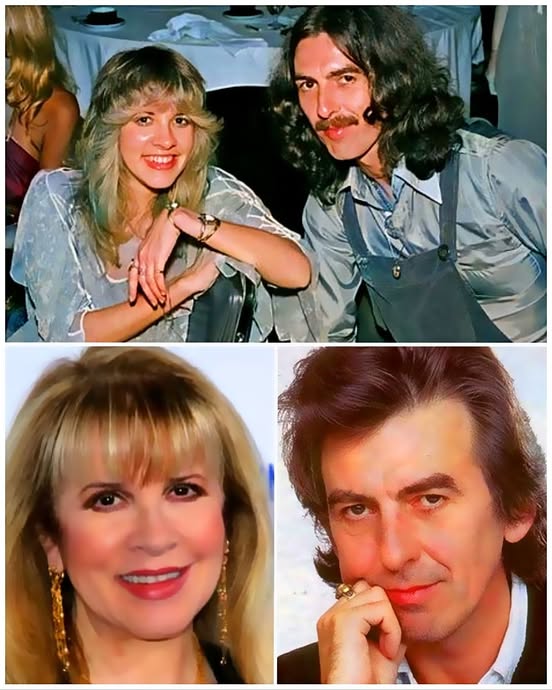In late 1978, when George Harrison invited Stevie Nicks to his home in Friar Park, it wasn’t for a collaboration. It was for peace. Both had spent the past few years climbing heights in their respective orbits—George, fresh from the seismic legacy of The Beatles and carving out his own path with “All Things Must Pass” and “Living in the Material World”, and Stevie, exploding into fame through Fleetwood Mac’s “Rumours” and her magnetic presence on “Tusk”. The two icons came from worlds seemingly apart: George with his introspective spiritualism and calm, Stevie with her gothic mystique and swirling energy. But that meeting in Henley-on-Thames wasn’t the first; their paths had crossed years earlier in Los Angeles during one of the many parties that linked the rock elite of the ’70s.

By 1980, their friendship had taken on an unusual intimacy. Stevie, dealing with personal heartbreaks and rising tensions within Fleetwood Mac, found George’s quiet, grounded demeanor soothing. George, drawn to her intensity and honesty, welcomed her as one of the few people who didn’t see him as a former Beatle but simply as George. Their phone conversations often stretched into the early morning hours, filled with confessions, spiritual questions, and music. It was during these times that George sent her an early demo of “All Those Years Ago”, and though she never contributed vocally, she gave input on the emotional tone of the track that he later said helped him push it forward.
As the 1980s progressed, the rumors began. British tabloids were quick to suggest a romantic entanglement, citing their private dinners, the mysterious weekend at George’s Maui estate, and a birthday message Stevie had left on his answering machine poetic, cryptic, and unmistakably affectionate. The truth, however, lived somewhere in the gray. Stevie once admitted in a backstage conversation during the “Mirage” tour that she had been “completely enchanted” by George. She claimed, with a wistful half-smile, that if he had asked her to vanish to India with him for six months, she might have. But George, ever aware of emotional entanglements, kept his boundaries firm.
It was the Glastonbury Festival in 1983 that reignited the public curiosity. Stevie made an unannounced visit, quietly attending George’s set from backstage. She wore a shawl that he had gifted her the previous Christmas, one that bore subtle embroidery of Sanskrit verses. Fans caught glimpses of the two in quiet conversation behind the stage curtain, with George laughing in a way rarely seen in public. A photographer later captured a single shot: George placing a hand on Stevie’s shoulder, both of them smiling with their heads close, a moment that became iconic in fan circles.
Despite constant probing, both artists refused to confirm anything beyond a deep friendship. George, in an interview with Rolling Stone in 1987, dismissed the rumors with a sly smile, saying, “Stevie’s got a lot of fire, but I’m more water. Sometimes that mixes well. Other times, it boils.” Stevie, years later, called George “the gentlest soul I ever met in the chaos of that era.”
There were fallouts too. In 1989, during a recording session in Montreux, Switzerland, where Stevie was working on “The Other Side of the Mirror”, George had planned to contribute slide guitar on “Ghosts”. But a disagreement about the direction of the song George wanted it stripped down, while Stevie insisted on lush orchestration led to tension. George left the studio quietly, leaving behind only a note: “Perhaps silence is the better harmony.”
They never recorded together again, though letters and messages still passed between them. After George’s passing in 2001, Stevie privately lit candles during her performance of “Landslide”, whispering his name just before the final chord faded.
Their bond lived in the quiet: the conversations never recorded, the gifts never spoken of, and the emotions buried just beneath the surface of public life. The truth about them never needed to be declared it was always written in the spaces between the songs.




